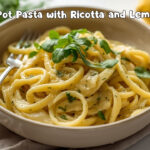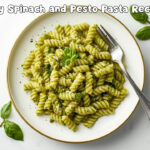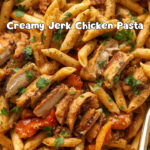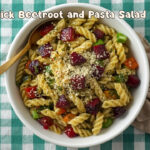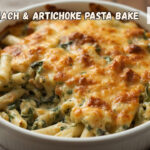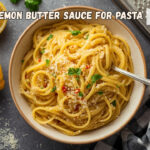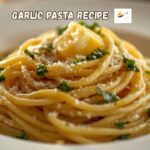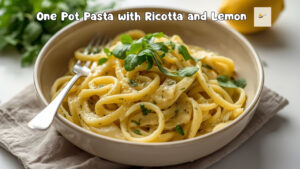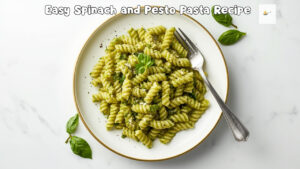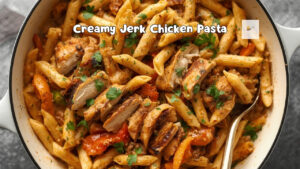Table of Contents
ToggleSome culinary traditions, like Italian pasta dishes, are always beloved and honoured. So far, one classic method that has stood the test is grating best cheese for pasta. But what cheese to use for pasta? Stay with me to explore our top recommendations.
In this guide on what cheese to use for pasta, I’ll share my insights on the best cheeses for pasta, to get the creamy and mild to the sharp and robust flavors. There are so much choices, let’s take a look at which pasta type and cheese combos makes the most delicious. Parmigiano-Reggiano to ricotta for creating a smooth creamy texture. Whether you’re preparing a classic Italian cuisine or experimenting with new flavors, the right cheese for pasta can elevate your dish to new heights.
When it comes to making a delicious pasta dish, choosing the right cheese is crucial. As a passionate home cook and pasta enthusiast, I’ve spent countless hours experimenting which cheese is used in pasta to find the perfect combinations.
What Cheese To Use For Pasta?
Before we explore specific cheeses types, it’s essential to understand what qualities make cheese a great addition to pasta. The best cheeses for pasta have a balance of milk protein, flavoring agents, and the right texture to complement various pasta dishes. Making cheese is an art that involves transforming milk into a flavorful and versatile dairy product.
What Are The Best Cheeses for Pasta
I’ve brought you the best cheeses for pasta to pair, along with all the info you need to understand and try them quickly. Everyone has their own taste, but some cheeses pair better with pasta. Now, try these cheeses with your following pasta recipe and enjoy!
Parmesan (Parmigiano-Reggiano)

Parmesan, or Parmigiano-Reggiano, is a hard cheese known for its rich, nutty flavor and granular texture. Originating from Italy, this cheese is made from cow’s milk and aged for a minimum of 12 months.
Parmesan is perfect for grating over hot pasta dishes. I love using Parmesan in pasta dishes like Spaghetti Carbonara and Fettuccine Alfredo. Its intense flavor stands out even in creamy sauces, and it melts beautifully when mixed with hot pasta. The origin of the milk and the meticulous processing give Parmesan its unique character.
Note: Parmesan can sometimes be too overpowering for delicate pasta dishes. If you use too much, it can make the dish too salty and mask other flavors.
- Spaghetti Carbonara
- Fettuccine Alfredo
- Lasagna
Ricotta

Ricotta is a soft, creamy cheese made from the whey left over after making other cheeses. It’s mild in flavor and has a slightly grainy texture. Ricotta adds a light, fluffy texture to dishes like Stuffed Shells and Manicotti. I also enjoy using it as a filling for ravioli, where it pairs perfectly with various herbs and spices.
Note: Ricotta can sometimes become too watery if not appropriately drained. It’s essential to ensure it’s well-drained to avoid making your pasta dish too runny.
- Stuffed Shells
- Manicotti
- Ravioli
Ricotta Salata

Ricotta Salata is best cheese for pasta, which is a variation of Ricotta that has been pressed, salted, and aged, giving it a firmer texture and saltier flavor. I often crumble Ricotta Salata over pasta salads for a salty, tangy kick. It’s also excellent in baked pasta dishes, where it maintains its structure and adds a delightful contrast to softer ingredients.
- Pasta Salads
- Baked Ziti
- Pesto Pasta
Feta

Feta is a crumbly, tangy cheese traditionally made from sheep’s milk. It’s known for its distinctive flavor and aromatic molds. Feta’s tanginess pairs wonderfully with Mediterranean-inspired pasta dishes. I like to use it in pasta with tomatoes, olives, and fresh herbs. It adds a burst of flavor without overwhelming the dish.
- Greek Pasta Salad
- Pasta with Tomatoes and Olives
- Orzo with Spinach and Feta
Mozzarella

Mozzarella is a soft, mild cheese made from cow or buffalo milk. It’s prized for its stretchy texture when melted. Mozzarella is a staple in my kitchen, especially for baked pasta dishes like lasagna and baked ziti. Its milk-fat content gives it a creamy texture that melts perfectly, creating that gooey, cheesy top layer everyone loves.
- Lasagna
- Baked Ziti
- Caprese Pasta
Pecorino Romano

Pecorino Romano is a hard cheese made from sheep’s milk. It’s salty, sharp, and slightly granular, similar to Parmesan, but with a more robust flavor. I often use Pecorino Romano in dishes like Cacio e Pepe and Pasta alla Gricia. Its strong flavor requires a light hand, but when used correctly, it can elevate a dish to new heights.
Note: Like Parmesan, Pecorino Romano can be too overpowering if used excessively. It’s best to use it sparingly.
- Cacio e Pepe
- Pasta alla Gricia
- Bucatini all’Amatriciana
Gorgonzola

Gorgonzola is a blue cheese made from cow’s milk, known for its bold flavor and creamy texture. I love the intense flavor of Gorgonzola in creamy pasta sauces. It pairs exceptionally well with ingredients like walnuts and pears, adding a sophisticated touch to simple dishes.
Note: Gorgonzola can be overwhelming for those who aren’t fans of blue cheese. Use it in moderation to avoid overpowering the dish.
- Gorgonzola Pasta with Walnuts and Pears
- Penne with Gorgonzola Cream Sauce
- Gnocchi with Gorgonzola
Cheddar

Cheddar is a hard cheese with a sharp, tangy flavor. It can vary in intensity from mild to extra sharp. While not traditionally used in Italian pasta dishes, Cheddar is best cheese for pasta like mac and cheese. Its melting properties and robust flavor make it ideal for creating a rich, creamy sauce.
Note: Cheddar can sometimes be too oily when melted, which might only suit some pasta dishes. It’s best used in dishes where a creamy, rich sauce is desired.
- Mac and Cheese
- Pasta Bakes
- Cheddar and Broccoli Pasta
I’ve provided a lot of information for this article, but if you want to explore further, you can check out these forums: City-Data Forum and Reddit Cooking. They offer great insights on what cheese to use for pasta.
Exploring More Cheeses for Pasta

Here are some additional cheeses that, while less commonly used, can still give excellent results in pasta dishes. Please take a look at these options to see how they might enhance your next meal!
Gouda is a semi-hard cheese with a mild, slightly sweet flavor. I find it works wonderfully in pasta bakes and adds a creamy texture without being too overpowering.
Fontina
Fontina is a soft cheese with a buttery flavor that melts beautifully. It’s great for creamy sauces and pairs well with mushrooms and truffles.
Asiago
Asiago is a hard cheese with a nutty flavor. It’s excellent for grating over pasta dishes and adds a deliciously rich taste.
I’m also adding a YouTube link that provides a great visual guide on using cheese in pasta dishes: Watch here. It’s a handy resource to see the cheeses in action!
which cheese is best for pasta pairing?

Cheese is vital in pasta dishes’ flavour, texture and richness — but only if you use it correctly. Here are some tips which cheese is used in pasta to add in your favourite pasta dishes:
- Melting cheese: Melting cheese, like mozzarella or fontina, makes a rich, creamy texture that coats your pasta beautifully. Add these cheeses directly into hot sauces or on top of baked pasta, where the heat can fully melt them into a smooth consistency when utilising melting cheeses.
- Grating cheese: Hard cheeses like Parmesan, Pecorino Romano, and Asiago are best cheeses for pasta. Grated cheese adds flavour and texture, specifically when sprinkled over the top of pasta. Grating cheese allows you to control your desired cheese quantity and helps to enhance the dish with a sharp, nutty finish.
- Adding cheese to sauce: Adding cheese directly to your pasta sauce can help thicken the sauce and create a smooth texture. For example, ricotta and parmesan are often mixed into different pasta sauces to thicken them for adding richness. Melt the cheese into a white or tomato sauce to make a creamier sauce, adjusting the amount to your desired thickness.
- Topping pasta with cheese: A final top drizzle of grated or crumbled cheese like parmesan or feta on top of your pasta adds both flavour and texture. This method works well for cold pasta salads and hot dishes, giving the pasta a gorgeous and delicious finishing touch that enhances its overall taste.
Personal Tips for Using Cheese in Pasta
Alright, you’ve gathered plenty of information about which cheese is used in pasta. Now, I’m going to share some tips that you can use directly to enhance your pasta dishes.
- Experiment with Combinations
Don’t be afraid to mix and match cheeses. Combining Parmesan with Mozzarella, for example, can give you the best of both worlds: the sharpness of Parmesan and the creaminess of Mozzarella.
- Use Cheese as a Topping
Sometimes, a sprinkle of cheese on top is all you need. I often finish my pasta dishes with a grating of fresh Parmesan or Pecorino Romano for an extra burst of flavor.
- Balance with Other Ingredients
Remember that cheese is just one component of your dish. Balancing it with other ingredients like fresh herbs, vegetables, and proteins can create a harmonious and delicious meal.
If you’re interested in exploring more recipes like spicy mozzarella pasta or cream cheese and tomato pasta, visit PastaSphere for a variety of delicious options. Check it out for more inspiration!
Conclusion
Understanding what cheese to use for pasta can really make a significant difference in your pasta dishes. Whether you prefer the robust flavor of hard cheeses like Parmesan or the creamy smoothness of soft cheeses like Ricotta, there’s a perfect cheeses for pasta recipe. By understanding which cheese is best for pasta and how they interact with other ingredients, you can create delicious and memorable pasta dishes. Happy cooking from Pastasphere!
Frequently Asked Questions
1. What is the best cheese for a simple pasta dish?
For a simple pasta dish, Parmesan is an excellent choice due to its sharp, nutty flavor and ease of use.
2. Can I use multiple cheeses in one pasta recipe?
Yes, combining cheeses can add depth and complexity to your dish. For example, using both Mozzarella and Parmesan in a baked ziti offers a perfect balance of creaminess and sharpness.
3. How does curd compare to cheese in pasta recipes?
Curd and cheese serve different roles in pasta dishes. Curd is usually used for a tangy flavor and creamy texture, while cheese adds richness and depth. For recipes needing cheese, consider options like Parmesan or Ricotta.
4. How should I store cheese to preserve its quality?
To preserve the cheese’s quality, keep it wrapped in its protective rind or in wax paper, then store it in an airtight container in the fridge. This helps maintain its flavor and texture for a longer time.
5. Can I Freeze Cheese for Pasta?
Yes, you can freeze cheese, but it’s best to freeze hard cheeses like Parmesan. Soft cheeses like Ricotta may become grainy after freezing. For best results, grate or shred the cheese before freezing, and use it directly from the freezer for cooking.



